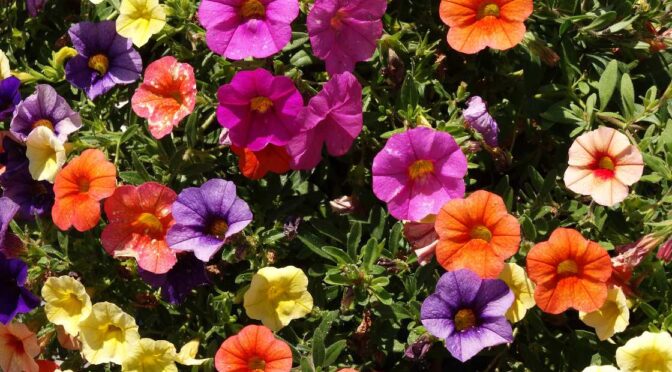Hyacinths are beloved spring-blooming flowers known for their vibrant colors and delightful fragrance. To ensure their continuous growth and encourage more blooms, deadheading becomes a crucial practice for every hyacinth enthusiast. In this guide, we will walk you through the simple steps of deadheading hyacinth, allowing you to maximize their beauty and enjoy a stunning display year after year.
Why Deadhead Hyacinth?
Deadheading is the process of removing spent flowers from a plant. By removing the faded blooms of hyacinths, you redirect the plant’s energy towards producing new flowers instead of seed production. This encourages more vigorous growth, extends the blooming period, and maintains the overall health of the plant. Deadheading is an easy and rewarding task that any gardener, whether a beginner or an experienced enthusiast, can perform.
When to Deadhead Hyacinth?
Deadheading hyacinth should be done as soon as the flowers start to fade. As soon as you notice individual blooms losing their vibrancy or petals becoming discolored, it’s time to remove them. It’s important to deadhead hyacinth promptly to prevent the plant from expending energy on seed formation, ensuring it directs its resources towards future blooms instead.
Tools Required for Deadheading
To deadhead hyacinth, you won’t need any specialized or expensive tools. In fact, your hands will be the primary instrument for this task. However, a pair of sharp pruning shears or scissors can come in handy, especially if you have a large number of hyacinth flowers to deadhead.
Step-by-Step Guide to Deadhead Hyacinth
Prepare: Before starting, make sure you have a container or a bag nearby to collect the removed flower heads. This will help keep your garden tidy and make disposal easier.
Examine the blooms: Inspect the hyacinth plant for fading flowers. Look for blooms with petals that have lost their color or are wilting. These are the ones you’ll want to remove.
Locate the base: Follow the stem of the faded flower down to where it emerges from the plant’s foliage. This is typically a few inches above the ground.
Cut or snap: Using your fingers or pruning shears, gently snap off the faded flower head or make a clean cut just above the base. Be careful not to damage the healthy foliage or emerging buds.
Dispose of the blooms: Place the removed flower heads in your container or bag. This helps prevent the spread of diseases and keeps your garden looking neat.
Repeat: Continue inspecting the hyacinth plant for fading blooms and repeat the deadheading process as necessary throughout the blooming season.
Post-deadheading care: After you have finished deadheading, water the hyacinth plant lightly to provide it with a boost of hydration. Additionally, consider applying a balanced fertilizer to replenish nutrients and support healthy growth.
Enjoy the Fruits of Your Deadheading Efforts
By deadheading hyacinths, you ensure that your garden remains visually stunning and fragrant. Regularly removing faded blooms not only enhances the overall appearance of your hyacinth plants but also encourages them to produce new flowers, resulting in a longer and more abundant blooming season. Incorporate deadheading into your gardening routine, and you’ll be rewarded with a breathtaking display of hyacinth blooms year after year.
FAQs
When is the best time to deadhead hyacinth?
The best time to deadhead hyacinth is as soon as the flowers begin to fade. Look for blooms that have lost their vibrant color or show signs of wilting. By deadheading promptly, you redirect the plant’s energy towards producing new blooms instead of seed formation, promoting healthier growth.
Can I use my hands to deadhead hyacinth, or do I need special tools?
You can use your hands to deadhead hyacinth. Simply locate the base of the faded flower, which is typically a few inches above the ground, and gently snap it off. If you prefer, you can also use sharp pruning shears or scissors to make a clean cut just above the base. However, it’s important to be careful not to damage the healthy foliage or emerging buds while deadheading.
How often should I deadhead hyacinth?
Deadheading hyacinth should be done as soon as individual flowers start to fade throughout the blooming season. Regularly inspect your hyacinth plants for fading blooms, and remove them as needed. By consistently deadheading, you encourage the plant to produce more flowers, extending the blooming period and enhancing the overall appearance of your garden.
Conclusion
In conclusion, deadheading hyacinth is a straightforward practice that can greatly enhance the beauty and vitality of these spring-blooming flowers. By removing faded blooms promptly, you redirect the plant’s energy towards producing new flowers, extending the blooming season, and maintaining the overall health of the plant. With just a few simple steps, such as locating the base of the faded flower and gently snapping it off or making a clean cut, you can effectively deadhead hyacinth and enjoy a more abundant and visually stunning display year after year.
Whether you choose to use your hands or opt for pruning shears, the process of deadheading hyacinth is accessible to all gardeners, regardless of experience level. By incorporating deadheading into your gardening routine and staying vigilant for fading blooms, you can make the most of your hyacinth plants and ensure their continuous growth and beauty.




